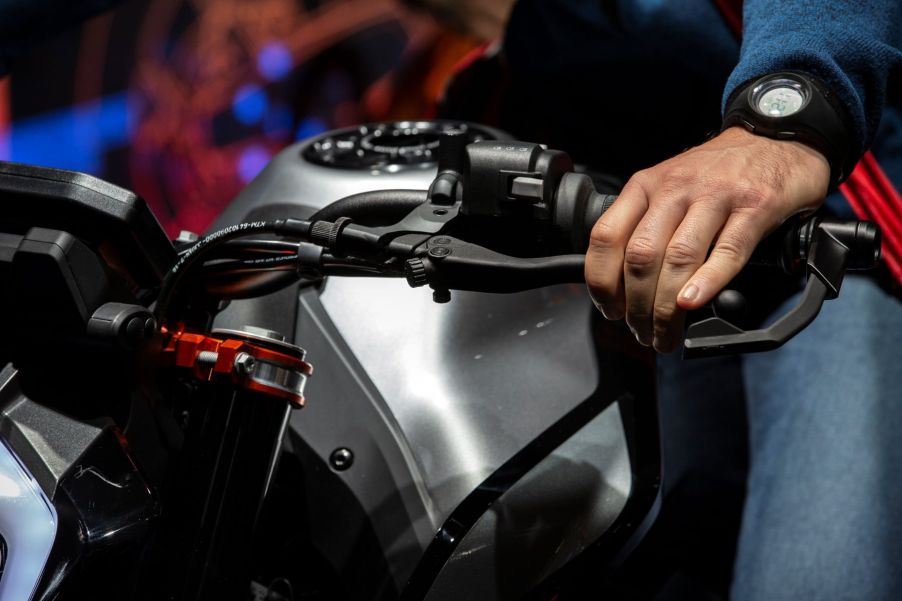
Motorcycles With Antilock Braking Drastically Improved Safety With Almost 25% Less Accidents
Motorcycles can be about freedom on the road as the wind rushes past, but they also carry an element of risk and danger. Proponents of motorcycle safety have been pushing for antilock braking systems on motorcycle models for about 10 years, and a now new study shows they drastically improve safety by almost 25%. Let’s take a look at this new study.
About antilock braking systems (ABS)

Antilock braking systems (ABS) have been around for many years. ABS was initially designed for airplanes, and was first sold on motorcycles in 1988, says Bennetts. The safety feature is currently optional on motorcycles rather than being a mandated standard feature. The systems can tell when hard braking risks turning into a skid. The ABS then quickly alternates between applying and releasing the brakes to stop the plane or vehicle quickly without the driver losing control.
Large trucks have had ABS required since 1997, and passenger vehicles have had included it since 2012. ABS can offer additional protections for motorcyclists since a skid could cause the rider to slide, fishtail, or “lay the bike down” to avoid an impact. In fact, many motorcyclists avoid hard braking out of fear of skidding.
The Insurance Institute for Highway Safety (IIHS) first asked the federal government to require ABS on street-legal motorcycles almost 10 years ago, petitioning the National Highway Traffic Safety Administration (NHTSA) in 2013. While the European Union does require ABS on some motorcycles, the United States doesn’t. ABS has become more common over the years, but it is still not required by law. It’s now standard on half of 2020 motorcycle models and available on a quarter, according to the IIHS.
The IIHS study on motorcycle antilock braking systems
A new study by the IIHS shows the importance of antilock braking systems in saving lives. The study looked at 65 motorcycle models of 10 different types that had available (but not standard) ABS between 2013 and 2019. Motorcycles equipped with ABS had 22% fewer fatal crashes per 10,000 registered vehicle years. The IIHS defines registered vehicle years as “equal to one motorcycle registered for one year.”
“We have known that ABS saves lives and have been saying it should be mandatory for 10 years now,” stated the study’s author, Eric Teoh, IIHS Director of Statistical Services. “This study is our most expansive one yet on the topic and confirms the importance of this feature.”
Earlier IIHS studies from 2011 and 2013 found ABS had an even bigger effect on fatal crash rates, but the new study included more types of motorcycles. Some of the additional motorcycle types are more likely to be ridden “aggressively and at higher speeds,” making ABS less of a protection. ABS was linked with a 32% lower crash rate in standard and cruiser type motorcycles, while it had approximately a 25% lower crash rate in touring and sport-touring motorcycles. That dropped to 19% lower for sport motorcycles and 12% lower for supersport motorcycles.
Helmets and other motorcycle safety features
Antilock braking systems aren’t the only feature in motorcycle safety history that has been disputed and argued over for many years. However, the introduction of additional safety technology, along with regulations and research on brain injuries and helmets, has led to a downward trend in motorcycle fatalities, according to Edwards & Patterson.
The Snell Memorial Foundation published its first helmet standards for motorcycle racers in 1959. In 1974, the U.S. Department of Transportation set safety standards for helmets. Helmets today carry a sticker showing if they meet these standards. The NHTSA in 2004 released a technical report showing that motorcycle helmets reduce the odds of dying in a crash by 37%. Today, only three states have no motorcycle helmet laws. Therefore, riders looking at purchasing a motorcycle should consider ABS as one of the top safety features after wearing a helmet to include on a new bike.


